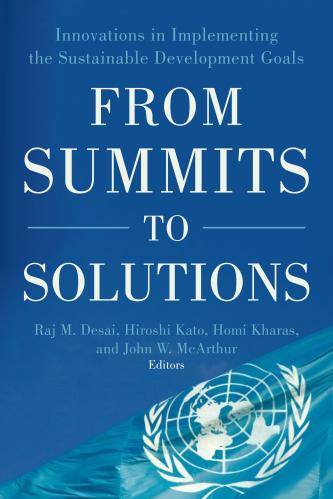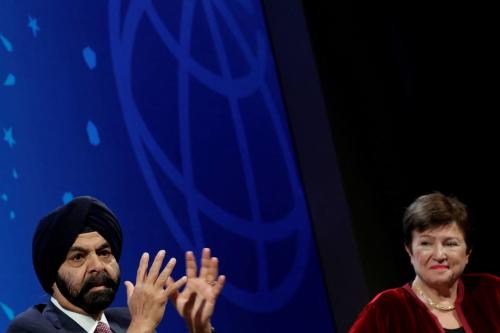This blog is adapted from ‘Unity in Diversity: Reshaping the Global Health Architecture,’ the author’s chapter in a new Brookings Press book, “From Summits to Solutions: Innovations in Implementing the Sustainable Development Goals.“
SDG 3: Ensure healthy lives and promote well-being for all at all ages.
The third Sustainable Development Goal (SDG) comprises targets that are challenging for many countries. Target focuses range from maternal and child health and infectious diseases to non-communicable diseases and injuries, with an overarching goal of universal health coverage.
The players associated with each target are also diverse. National governments, the World Health Organization (WHO) and other U.N. agencies, and various organizations work to move the needle on global health. The World Bank and other multilateral development banks play an important role in global health financing, as do private philanthropic organizations and high-income donor countries.
My chapter in “From Summits to Solutions” reviews the global efforts by these players in recent years and identifies areas for which extensive mobilization at the global level is being pursued. I seek to identify a set of criteria by which the activities of existing alliances, partnerships, and other international health regimes can be evaluated for a better global collective action for health under the SDGs.
In the Millennium Development Goal era, global health governance was largely characterized by the proliferation of global health initiatives. In the Sustainable Development Goal era, our vision of global health governance needs to be broadened to focus not only on the individual health initiatives, but also their interactions with each other.
Meeting the challenges in achieving the 2030 targets will require a renewed effort to resolve coordination problems across global health initiatives so that the international health community can reconcile diverse agendas and constituencies to improve health and well-being for all.





Commentary
Bringing global health actors together for a healthier world
August 14, 2018